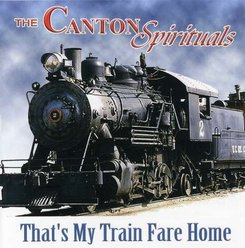|
|
|
|
This week we will be studying spirituals. Spirituals are an important part of the history of American music. They are generally Christian songs created by African slaves in the United States, and they also described the hardships of slavery. This historic group of songs is unique to America and is now recognized as a distinct genre of music.
|
|
|
|
|
SORROW SONGS Many spirituals are known as “sorrow songs”. They express the suffering and hardships experienced by African-American slaves. These songs are slow, intense, and melancholic in nature. Two well-known “sorrow songs” are “Nobody Knows the Trouble I’ve Seen” and “Sometimes I Feel Like a Motherless Child”. |
|
|
|
|
Hogan was an accomplished pianist by the age of nine. He was musically educated from a young age and attended the New Orleans Center for Creative Arts High School, the prestigious Oberlin Conservatory of Music, and the Julliard School of Music. These are colleges where the most talented musicians go to study.
|

|
|
|
|
Moses Hogan had many accomplishments in his music career. During his piano performance years, he won first place in the 28th Annual Chopin Competition in New York. He introduced the professional choral spiritual to choirs. Choral means music for a choir to sing. With his music, Hogan created new interest in the tradition of African-American spirituals. He founded and conducted the Moses Hogan Chorale Singers. He was well-known throughout the world as a conductor and led the famous Mormon Tabernacle Choir, along with others. Hogan composed and arranged over seventy spirituals.
|
|
Moses Hogan's arrangements are quite unique. They generally fall into three categories of style: traditional, choral layering, and call and response.
‘Traditional’ is where all singers follow the same rhythm pattern but sing different pitches to make chords. ‘Choral layering’ is where different sections of a choir sing rhythms and melodies a little different from the others, creating interesting effects in the music. 'Call and response’ is a style that came from West Africa. A leader improvises a line of text and a chorus of singers echoes a refrain. The leader can use a vocal style full of slides, turns and rhythm variations. |
|
|
|
|
|
|
|
Spirituals have provided an important legacy for the development of American music. Their descendants include southern gospel, blues, rhythm and blues, rock and roll, jazz and even hip hop. Many spirituals are played as instrumental music rather than being sung. For example, “When the Saints Go Marching In” has been popular as a march for parades and school bands. |
|
Traditional style spirituals were first brought to the attention of southern and northern Americans in 1871, shortly after the Civil War ended. An African-American singing group called the Fisk Jubilee Singers was formed at Fisk University in Nashville, TN. The group was organized to tour and raise funds for the African-American college. Some of the nine singers and their families were freed slaves. They toured along the Underground Railroad path in the United States, as well as performing in Europe. The Fisk Singers continue to tour today, often performing Moses Hogan’s arrangements.
|
|
|
|
